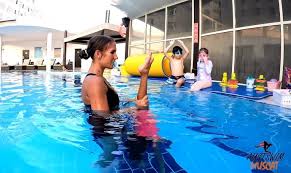Why Water Safety Is No Longer Optional
Every year, Australians are reminded of the quiet power of water—sometimes calm, sometimes catastrophic. A family day out can turn tragic in seconds. In response, more individuals, schools, and workplaces are embracing the importance of completing a water safety course. But how long does swim training really take? And why should it be on everyone’s priority list?
How Long Is Swim Training?
The duration of swim training depends on your goal. Are you learning to swim, teaching others, or building a water safety culture in your workplace?
- For beginners, learning basic swimming strokes and water survival techniques can take anywhere from 8 to 12 weeks of regular sessions.
- For aspiring instructors, a certified water safety course can span several weeks, often broken into theory modules and practical assessments.
- For corporate or school-based programs, courses are often tailored into 1–3 day workshops followed by practical evaluations.
The real answer? Training isn’t a one-time thing—it’s a commitment to being ready when it counts.
The Real Value of a Water Safety Course
Swimming skills are just the surface. These courses are about decision-making under pressure, spotting dangers before they escalate, and knowing how to assist safely.
Whether you’re a parent, teacher, fitness coach or just someone who spends time by the beach, a water safety course gives you the confidence to respond to emergencies.
Key areas covered often include:
- Recognising rips and hazards in natural water
- Safe pool supervision techniques
- Rescuing with minimal personal risk
- CPR and basic first aid
- Legal responsibilities in aquatic environments
Courses are structured for people of all ages and abilities. Some cater specifically to teachers and early childhood professionals. Others suit pool lifeguards, swim coaches, and volunteers at surf clubs.
Real Stories: What Water Safety Can Prevent
It’s not just theory—these courses change outcomes.
Take Josh, a 17-year-old from regional Victoria. He completed his community’s swim and safety program through school. One summer, while kayaking with friends, one capsized and got caught under the overturned boat. Thanks to training he’d picked up just weeks earlier, Josh stayed calm, flipped the kayak, and helped his mate back to shore—well before emergency services arrived.
Situations like this aren’t rare. According to the Royal Life Saving National Drowning Report, over 280 people drowned in Australia last year—many in rivers and creeks. Water skills, taught young and refreshed often, would drastically cut those numbers.
Are Water Safety Courses Only for Adults?
Absolutely not. In fact, introducing water awareness in early childhood is crucial. Some courses are designed for young children, teaching them floating skills, how to call for help, and how to stay calm if they fall in.
Parents, too, benefit from knowing how to spot drowning signs—which often don’t look like what you see in the movies. There’s no thrashing or screaming. Real drownings are silent and fast. That’s why proactive education is critical.
Choosing the Right Water Safety Course for Your Goals
Not every course suits every learner. Think about your environment and your exposure to aquatic risks.
- Working near pools, lakes, or beaches? Opt for comprehensive instructor-level training.
- Coaching kids or running swim classes? Look for programs with strong child safety and supervision components.
- Just want to feel safer at family BBQs by the river? A foundational course covering rescue techniques and CPR is ideal.
No matter your goal, a reputable water safety course should cover prevention, response, and basic life support skills.
Course Duration vs Lifelong Preparedness
So, how long is swim training? Weeks, yes. But its real value lasts a lifetime.
Completing a water safety course isn’t about ticking a box. It’s about embedding habits that kick in when the stakes are high. For many, these courses lead to ongoing involvement in community swim programs or volunteering at surf life saving clubs—passing on knowledge that might one day save a life.
Final Word: Get Trained Before You Need It
Australia is surrounded by water, dotted with lakes, and rich with backyard pools. That means risk is everywhere—but so is the opportunity to be ready. Whether you’re diving into the ocean or just supervising your kids at the local pool, don’t rely on luck.
Invest time in proper training.
Because knowing what to do in the water—before something goes wrong—is what actually keeps people safe.

